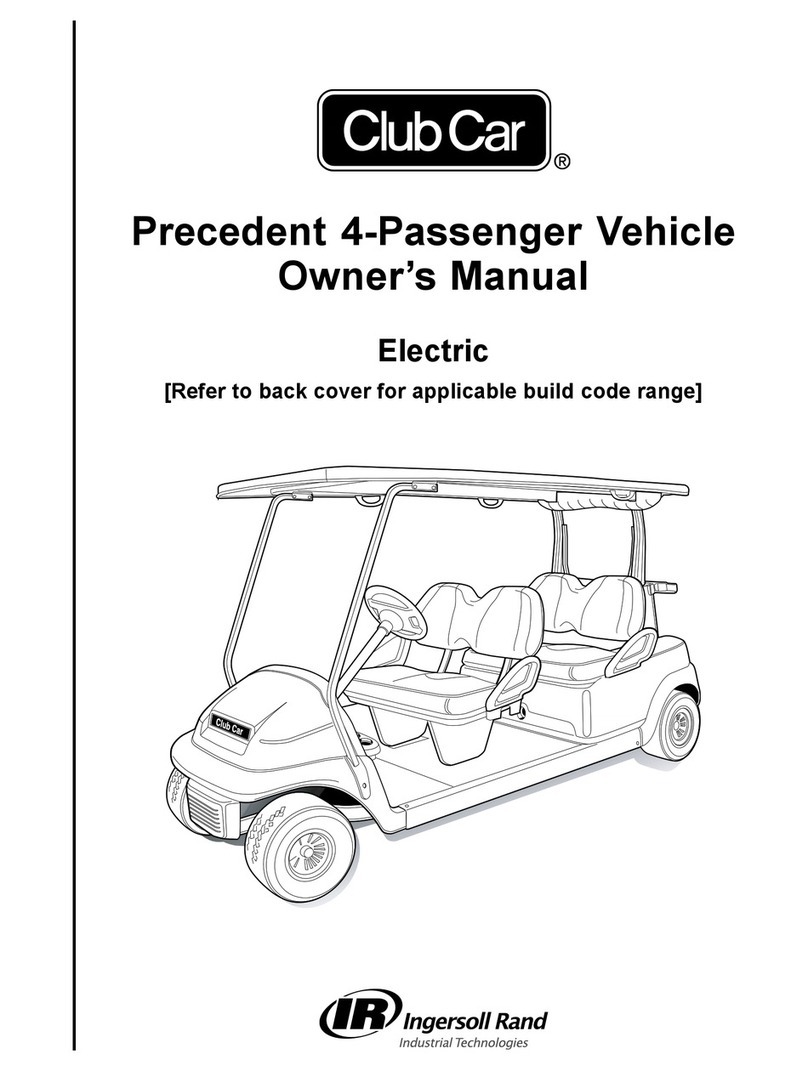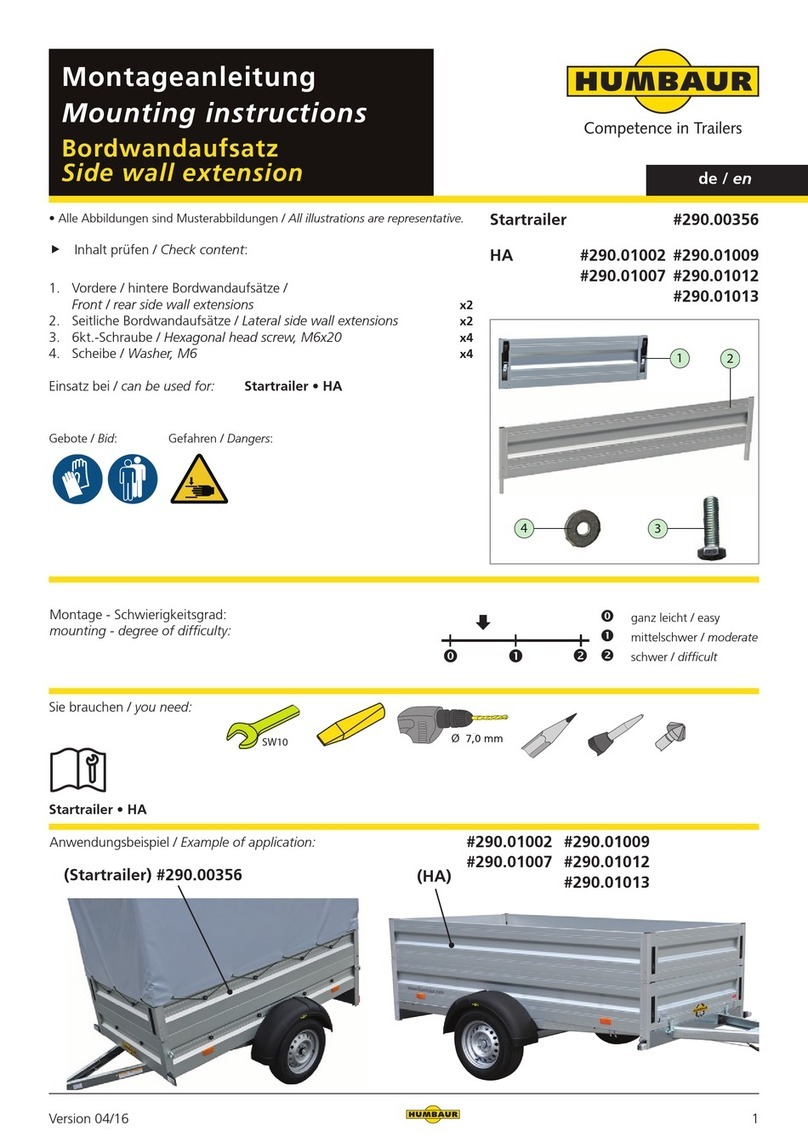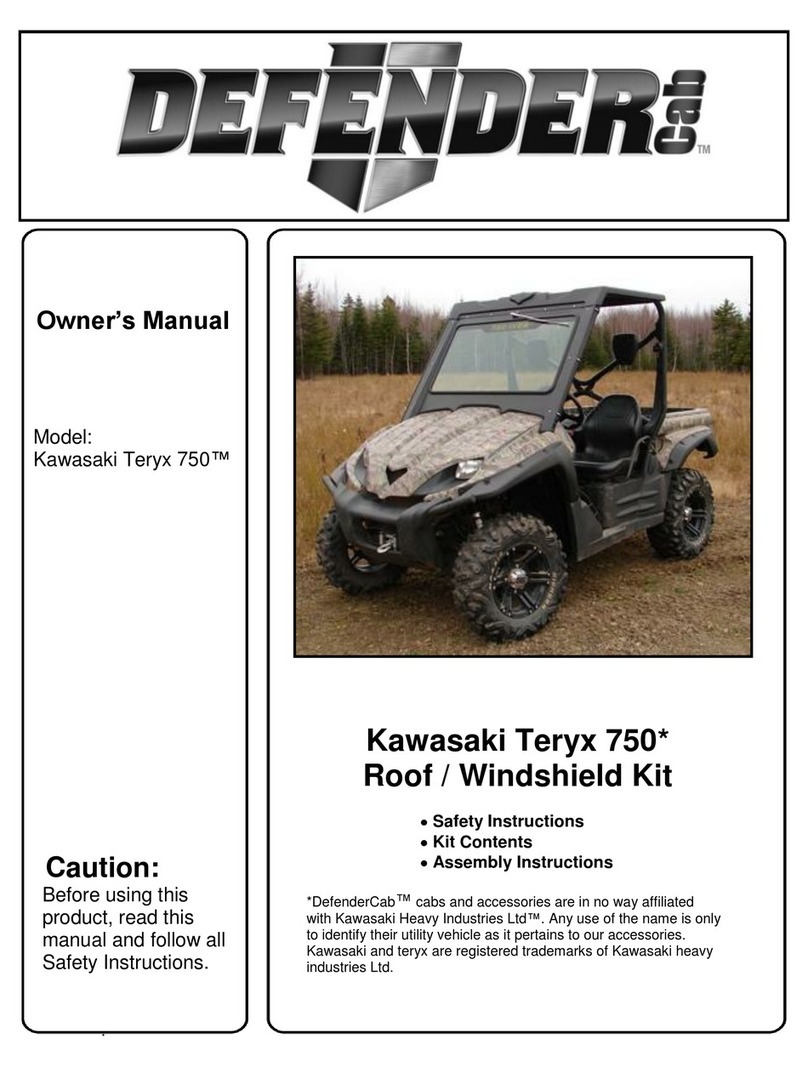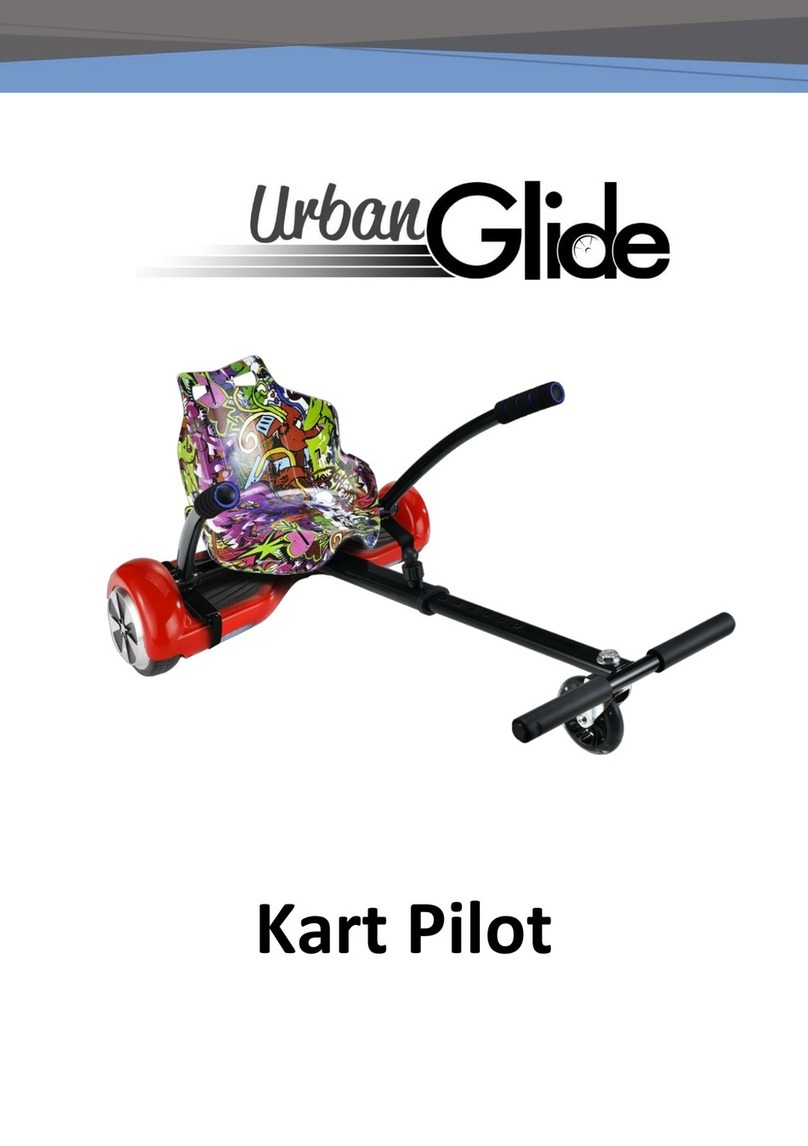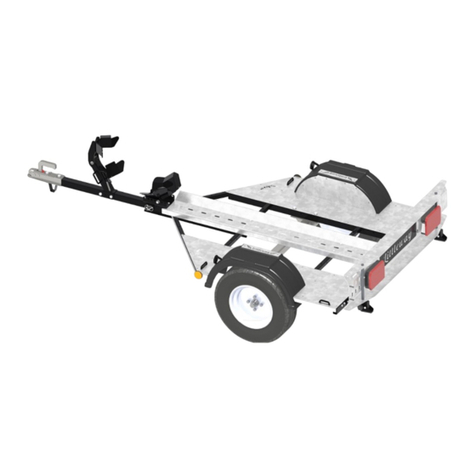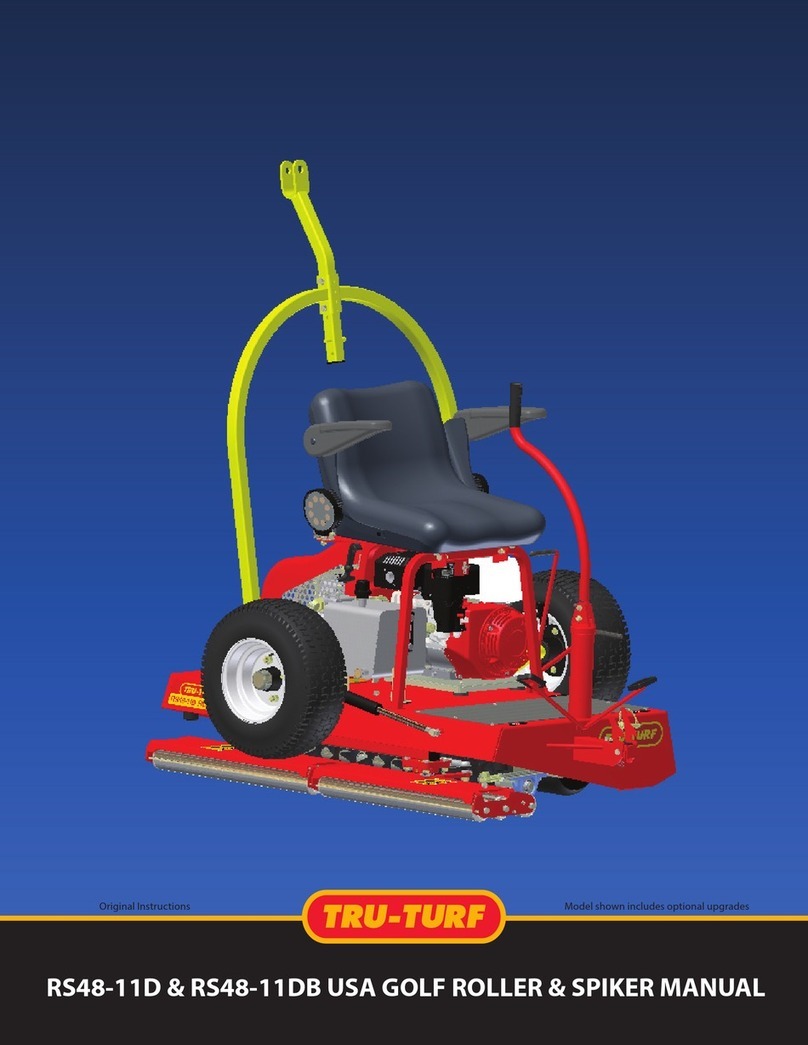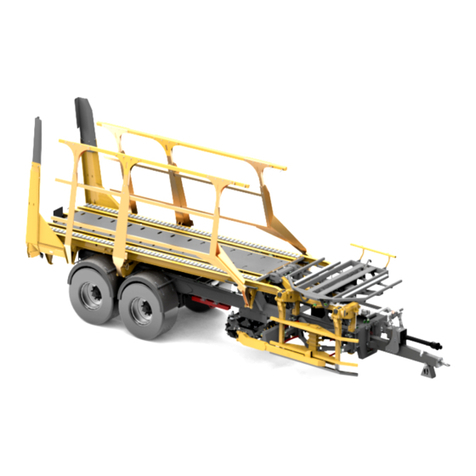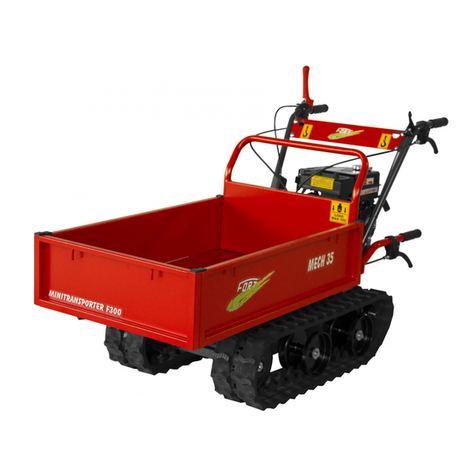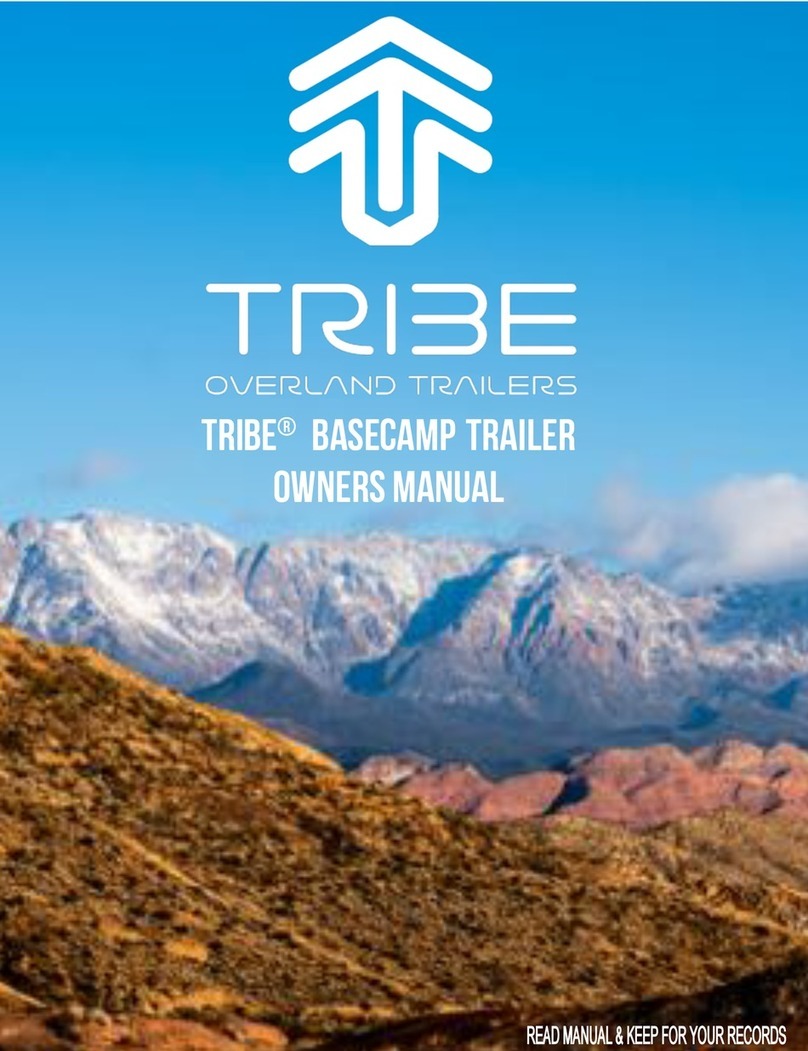Silverwing SW9F User manual


2
TABLE OF CONTENTS
TRAILER INFORMATION .......................................................................................................................... 3
COUPLING TO THE TOW VEHICLE............................................................................................................ 4
COUPLING AND UNCOUPLING THE TRAILER FROM THE TOW VEHICLE ............................................................................4
BALL-HITCH COUPLER ..........................................................................................................................................4
INSTRUCTIONS ON COUPLING TO THE TOWING VEHICLE.............................................................................................. 5
LOADING THE TRAILER ........................................................................................................................... 7
OVERALL LOAD WEIGHT........................................................................................................................................ 7
DISTRIBUTION OF LOAD WEIGHT............................................................................................................................. 7
PROPER TONGUE WEIGHT .....................................................................................................................................8
LOADING THE TRAILER ..........................................................................................................................................9
CHECKING THE TRAILER........................................................................................................................ 10
NEW TRAILER ADJUSTMENTS ............................................................................................................................... 10
INSPECTION, SERVICE, AND MAINTENANCE ......................................................................................... 11
BEFORE EACH USE.............................................................................................................................................. 11
EVERY 3MONTHS OR 3,000 MILES........................................................................................................................ 11
EVERY 6MONTHS OR 6,000 MILES ....................................................................................................................... 12
EVERY YEAR OR 12,000 MILES ............................................................................................................................. 12
SAFETY INFORMATION ......................................................................................................................... 13
INAPPROPRIATE DRIVING SPEEDS.......................................................................................................................... 13
IMPROPER HANDLING OF THE VEHICLE ................................................................................................................... 13
OVERLOADING AND IMPROPER LOADING OF THE TRAILER ......................................................................................... 14
IMPROPERLY COUPLED TO THE HITCH .................................................................................................................... 14
INADEQUATE OR INAPPROPRIATE TOWING VEHICLE AND HITCH ................................................................................. 15
IMPROPER TIRE PRESSURE AND WEARING .............................................................................................................. 15
LOOSE LUG NUTS............................................................................................................................................... 15
IMPROPER TRAILER STRUCTURE MAINTENANCE ...................................................................................................... 15
TOWING YOUR TRAILER........................................................................................................................ 16
GENERAL GUIDELINES FOR SAFE TRAILER TOWING ...................................................................................................17
THE SILVERWING WARRANTY............................................................................................................... 18
7-YEAR DRIVE TRAIN WARRANTY.......................................................................................................................... 18
7-MONTH BUMPER-TO-BUMPER WARRANTY.......................................................................................................... 18
© Copyright 2018 Silverwing Trailers. All rights reserved.
All trademarks and service marks are the properties of their respective owners.






8
PROPER TONGUE WEIGHT
When towing, it is necessary to have the trailer tongue and towing vehicle carry some of the
weight of the load. This load causes a downward force on the towing vehicle hitch, and this
downward force is needed to ensure stable towing. If there is not a sufficient amount of
downward force on the hitch (aka, not enough weight on the trailer tongue), the trailer could
become unstable when towing at higher speeds. Also, if the trailer tongue is exerting an upward
force on the hitch (caused by the back of the trailer carrying most of the load), the rear tires of
the towing vehicle may not have enough traction when driving, which would cause loss of
control.
However, if there is too much downward force on the hitch, the front tires of the towing vehicle
may not get enough traction when driving, and would result in loss of control of the vehicle. This
is particularly a problem if the towing vehicle drives with the front tires.
Clearly, it is necessary to have the correct amount of load on the trailer tongue to ensure safe
driving. The rule of thumb for a ball-hitch towing vehicle is that 10-15% of the total weight
should be located on the trailer tongue to ensure safe and controlled towing. Once again,
the total weight is the trailer weight along with the cargo weight. If your trailer weighs 500 lbs,
and you have 1000 lbs of cargo, your total weight will be 1500 lbs. For a ball-hitch tow with a
total weight of 1500 lbs, only 150-225 lbs should be on the trailer tongue.
HOW TO CHECK TONGUE WEIGHT
1. Make sure the tow vehicle and trailer are on level ground since this is how they will be
positioned when towing
2. It is recommended to use a tongue weight scale to check the tongue weight, which is
oftentimes available from a local dealer. Otherwise, use a bathroom scale.
3. If using a bathroom scale, do the following:
a. Block the front and rear trailer wheels to prevent it from rolling
b. Raise the trailer tongue with the jack
c. Place the scale directly below the coupler
d. Place a strong block support (ex. A wood or cement block) on the scale and check
the weight of the block. Make sure the support is tall enough so that the trailer is
level, or nearly level, once lowered
e. Lower the trailer tongue onto the block support until the bottom of the jack is off
the ground
f. Check the weight, and subtract the weight of the block support. This will give you
your tongue weight



11
INSPECTION,SERVICE,AND MAINTENANCE
To insure a safe and operable trailer, always inspect, service, and maintain your trailer regularly.
If you don’t know how to perform the necessary maintenance for the listed items, have your
dealer or professional do them. Make sure to perform the necessary inspections and services at
the designated time or mileage.
BEFORE EACH USE
Item Inspection/Service
Coupler/Hitch ball Inspect for cracks, pits, and flats. If needed,
replace with a ball and coupler with the
appropriate GVW rating
Grease regularly
Inspect locking devices, and replace if
necessary
Safety chains and hooks Inspect for wear, tear, and damage
Tires Inspect tire pressure, and inflate as needed
Wheels Inspect lug nuts for tightness. Tighten if
necessary
Inspect the torque on new wheels for the first
10, 25, and 50 miles, and after any impact
EVERY 3MONTHS OR 3,000 MILES
Item Inspection/Service
Hinges Inspect for wear, tear, and damage;
specifically broken welds. Replace if
necessary
Bolts Inspect for tightness. Tighten if necessary
Shocks Inspect for wear, tear, and damage

12
EVERY 6MONTHS OR 6,000 MILES
Item Inspection/Service
Tires Rotate at 5,000 miles, or before if necessary
Inspect tread and sidewalls for wear. Once
the tread is worn down, the sidewall bulges,
or the sidewall is worn down, replace the tires
EVERY YEAR OR 12,000 MILES
Item Inspection/Service
Jack Inspect the bolts—insure it is attached
properly
Trailer body Inspect all frame members for damage and
wear. Replace if broken or severely worn.
Inspect all bolts. Tighten if necessary
Inspect all welds, and repair if necessary
Inspect the ramp(s) for damage or wear.
Replace if broken or severely worn
Inspect stake pockets for damage or wear.
Clean dirt build-up on the trailer
Wheels Inspect rims for damage, wear, and tear.
Replace as needed.

13
SAFETY INFORMATION
It is important to follow appropriate and safe practices when towing your trailer. Losing control
of you trailer can result in serious injury or death; common causes for loss of control include:
•Inappropriate driving speeds
•Improper handling of the vehicle
•Overloading and uneven loading of the trailer
•Improperly coupled to the hitch
•Inadequate or inappropriate towing vehicle and hitch
•Improper tire pressure and wearing on the tires
•Loose lug nuts
•Improper trailer structure maintenance
This owner’s manual only provides information for the SW9F trailer, and does not cover the
necessary details specific for your towing vehicle and hitch. You must read and understand
the directions given in the manuals of your towing vehicle and hitch, and follow those
instructions along with the instructions given in this manual.
INAPPROPRIATE DRIVING SPEEDS
You must adjust your usual driving habits when towing a trailer.
In ideal road conditions, the recommended towing speed is 60 mph. Drive any faster, and there
is a possibility of overheating the tires, and losing control of the trailer. Never exceed the
recommended towing speed. In inclement weather, you will need to significantly reduce your
speed to keep control of the trailer. Driving too fast in inclement conditions can result in loss of
control and serious injury or death.
IMPROPER HANDLING OF THE VEHICLE
Handling a vehicle while towing a trailer is significantly different than driving just a vehicle. To
properly handle towing your trailer, remember towing a trailer significantly affects the
following:
•Decreased acceleration; you will not be able to speed up as quickly as you’re accustomed
to. This will also affect the time it takes to pass other vehicles
•Increased stopping distance; it can take a significantly longer amount of time and
distance to stop your vehicle. Account for this when braking for traffic and stop lights

14
•Increased turning radius; you must make much wider corners when turning with a trailer,
so as to not hit anything on the inside radius of the turn.
•Increased passing distance (due to longer length); if you are not sure if you can safely
pass a vehicle, do not pass the vehicle
Other things to be aware of when towing a trailer include:
•Slippery conditions. Slippery conditions will affect you more if you’re towing a trailer.
These can include rain, sleet, snow, etc. Drive below the recommended speed when
facing this conditions to make sure you can properly handle your vehicle and trailer
•Swaying of the trailer. The trailer swaying is caused by passing trucks and other large
vehicles. In order to correct swaying, DO NOT BRAKE. Instead, continue driving and
pulling the vehicle—this will stabilize the trailer.
•Check your mirrors. Make sure to frequently check your mirrors to check traffic and also
check your distance to other vehicles
•On steep roads, use a low gear. Do not ride the brakes when driving down a steep grade.
If you do so, you may over-heat your brakes, making them ineffective
OVERLOADING AND IMPROPER LOADING OF THE TRAILER
Please refer to the Loading the Trailer section of this manual for more details
Overloading is when the weight of the trailer plus the weight of your load exceed the GVWR.
Overloading can cause you to lose control of your towing vehicle and cause serious injury or
death. Never overload your trailer when towing. Improperly loading the trailer can cause failure
in tires, wheels, axle or structure of the trailer. Always ensure your trailer is properly loaded. If
you are not sure how to do this, refer to the Loading the Trailer section of this manual.
Make sure your cargo is always fastened and tied down sufficiently; if it is not, your cargo may
shift and cause loss of control which can lead to serious injury or death. Even if you initially
loaded your trailer properly, shifting cargo can cause you to lose control of your trailer. Do not
load improper cargo on your trailer; only load what the trailer was designed for. Also, ensure
your trailer is loaded in such a way as to not exceed the GAWR.
IMPROPERLY COUPLED TO THE HITCH
Please refer to the Coupling to the Tow Vehicle section of this manual for more details. For the
coupler and hitch to be correctly fastened:
•Ensure that the hitch load rating is sufficient for your coupler; it must be greater or equal
to your coupler.
•Ensure the hitch and coupler sizes match.

15
•Ensure the hitch is in proper working order and in good condition.
•Ensure the hitch is fastened tightly before attaching it to the coupler.
•Ensure the safety chains are properly rigged once hitch and coupler are attached
Failure to properly couple the towing vehicle to the trailer can result in serious damage, injury
and death.
INADEQUATE OR INAPPROPRIATE TOWING VEHICLE AND HITCH
Using a hitch or towing vehicle with a load rating less than the load rating of the trailer can cause
you to lose control of the trailer, and lead to serious injury and death. Always make sure your
hitch and towing vehicle have the same rating as the GVWR as the trailer.
IMPROPER TIRE PRESSURE AND WEARING
Trailer tires are carrying a heavier load than regular car or truck tires, and will therefore fail more
often. Because of this, make sure to inspect your tires before towing your trailer.
Do not use a tire if you see bald spots, bulges, cuts, cracks, or cords showing. If you see uneven
tread wear, it is recommended you take it in for maintenance to diagnose the cause. It is
recommended you do not tow your trailer with uneven tread wear since this will cause early wear
and tear on the tires, causing them to fail sooner than expected.
Always make sure your tires have the correct amount of pressure in them before towing.
Incorrect tire pressure will cause your trailer to be unstable, and can result in a tires blow out and
loss of control, which can lead to serious injury or death. Always make sure to check your tires in
cold weather, as the pressure will change with the temperature.
LOOSE LUG NUTS
Please refer to the Checking Your Trailer section of this manual for more details.
Check your lug nuts to make sure they are tightened before towing your trailer. Failure to do so
could result in the wheel becoming loose, and cause serious injury or death.
IMPROPER TRAILER STRUCTURE MAINTENANCE
Aluminum trailers are advantageous since they will not rust the same way steel trailers will, but
you must still take sufficient care of them. Always make sure to never exceed the GVWR and the
GAWR of the trailer to prevent failure of the structure. Clean off your trailer of dirt and grime
after every tow. Inspect welds for cracks and wear. Inspect bolts to make sure they are
sufficiently tight.

16
TOWING YOUR TRAILER
If you have never towed a trailer before, you will need to learn safe towing practices and how to
back up with a trailer correctly.
Driving with a trailer is very different than driving without a trailer. Your maneuverability
becomes much more limited, and you will need to spend time learning to drive comfortably with
a trailer attached to your vehicle. With practice, you can feel confident in your ability to tow.
With limited maneuverability, the hazards and risks are significantly increased when towing a
trailer; you are responsible for keeping control of your towing vehicle and trailer, and you are
responsible for any damages caused by losing control of your towing vehicle and trailer.
To practice driving while towing, do the following:
•First, read and follow the instructions given in the sections Coupling to the Tow Vehicle,
Loading the Trailer (if you are loading anything), and Checking the Trailer
•Find a clear, flat, open area without traffic to practice towing your trailer
•Adjust your mirrors so you can easily see your trailer and the area to the rear of it
•Drive slowly (around 5-10 mph). Move your wheel around to get a feel for how your
vehicle responds with a trailer attached
•Make some left and right hand turns. Watch in your mirrors how your trailer responds to
the turns, and how much room will be required to make a turn without hitting anything.
Remember, the turning radius with a trailer is much wider than without a trailer
•Practice braking with the trailer. If your trailer does not have brakes (most of the smaller
aluminum trailers will not have brakes), watch how your trailer reacts to braking. If your
trailer does have brakes, they should brake at the same time as the towing vehicle. If they
aren’t, double check the wiring to make sure you have a good connection
Backing up a towing vehicle with a trailer will take a lot of practice. Go slow, be patient, and
practice a lot. To practice backing up a trailer, do the following:
•Get out of you vehicle and check behind the trailer to make sure there is nothing in the
way
•Get in your car and place your hands on the bottom of the wheel
•When you move your hands counterclockwise (right), the rear of your trailer will also
move to the right. When you move your hands clockwise (left), the rear of your trailer will
also move to the left

17
•The SW9F trailer is a bumper hitch trailer, so you will need to make sure not to turn the
trailer too much, as it could hit the rear of the towing vehicle
•When you want to straighten the trailer, simply drive forward, or turn your wheel in the
opposite direction of your trailer
GENERAL GUIDELINES FOR SAFE TRAILER TOWING
•Check and recheck your tie-downs to insure the load will not shift. Make sure to also do
this while towing.
•Check your coupler and hitch, safety chains, tires, and wheels to make sure they are in
correct working order
•Check your lights to insure they are functioning properly
•Check your lug nuts and bolts to insure they are properly tightened
•Check your coupler after towing for 50 miles
•While towing, always use your mirrors to insure you have enough room for changing
lanes or pulling into traffic
•Always give yourself plenty of room for passing. A good rule to follow is the passing
distance with the trailer is 4x the distance without your trailer.
•Always use your turn signals well before you intend to turn/pass
•Always allow plenty of space for you vehicle/trailer to stop
•Never drive faster than 60 mph; never drive so fast as to make the trailer sway
•Shift into low gear for city driving, and also for ascending and descending grades
•Never ride your brakes on descending grades. This could cause them to overheat and
stop working, resulting in a runaway vehicle and trailer
•It is recommended not to use full throttle when driving up a hill; build speed as you
approach the hill instead
•Always slow down for bumps in the road, and do not brake while driving over the bump
•Always slow down before entering a curve; don’t brake on the curve unless absolutely
necessary. This insures your towing vehicle keeps control of the trailer.
•Never apply brakes to correct a swaying trailer; instead, continue pulling the trailer with
a slight acceleration to stabilize the trailer.
•Make hourly stops to check the following:
oCoupler and hitch are secure and locked
oElectrical connections are secure and working
oSafety chains are secure and properly slack
oTires are at proper pressure
oCargo is secure

18
THE SILVERWING WARRANTY
Published January 1, 2018
For warranty fulfillment DO NOT go through retailer but contact manufacturer (Silverwing
7-YEAR DRIVE TRAIN WARRANTY
The 7 year warranty covers defects in workmanship and materials for non-moving parts of the
trailer axle and frame.
Includes:
•Non-moving parts on axle
•Aluminum bed frame
•Structural beams
Excludes (but not limited to):
•Deck damage from regular use
•Moving parts
•Overloading damage
•Damages due to improper maintenance
7-MONTH BUMPER-TO-BUMPER WARRANTY
The 7 month warranty covers the complete trailer bumper-to-bumper to include workmanship
and materials for the entire trailer and only the following accessory items: coupler, jack, lights,
and tires.
Includes:
•Frame and sub-frame
•Tailgate
•Coupler, jack, and lights
•Tires (defects only)
•Pins
Excludes (but not limited to):
•Flat tire repairs
•Bolts
•Overloading damage
•Damages due to improper maintenance

19
Warranty registration is required within 14 days of date of purchase to qualify. Failure to
register your warranty will nullify and void any claim to the Silverwing Trailers warranty. Keep a
copy of the warranty registration and receipt of purchase for proof of any future warranty claim.
In the event that the Silverwing trailer is defective in workmanship and material under the trailer
warranty specification with normal use, the unit may be returned to Silverwing Trailers location
in Grace, ID (purchaser is responsible for any freight or related costs to and from the facility in
Grace, ID) and the trailer will be inspected. If the Silverwing trailer is found to be defective, the
trailer will be repaired at no charge to the purchaser. Any repairs completed without prior
authorization from Silverwing Trailers will not be honored nor paid. With written approval only,
repairs may be done at another location using costs or repair and labor determined only by
Silverwing Trailers.
Silverwing Trailers will inspect any claim prior to repair to determine the defect. Misuse,
adjustments, alterations, abuse, overloading (above GVWRs stated on trailer documents),
improper loading, damages resulting from failure to check and torque lug nuts correctly, acts of
God, or accident caused to the trailer is not included in the warranty.
Silverwing Trailers will not be responsible for accidents, incidental, indirect, special, or liable
damages to persons or property which may result from a defect in workmanship or material.
Silverwing Trailers is not responsible or liable for damages including (but are not limited to) loss
of income, loss of time, and any other costs or fees associated with any warranty issue or claim.
The purchaser will be responsible for any freight costs incurred to transport the trailer as directed
by Silverwing Trailers to an authorized dealer or the Silverwing Trailers factory location.
Any repairs or claims must be pre-approved and authorized in writing from Silverwing Trailers.
The warranty shall be null and void in the event the trailer has been subject to modifications,
misuse, neglect, accident (natural or otherwise), and overloading (loading in excess of gross
vehicle load rating).

Table of contents
Popular Utility Vehicle manuals by other brands
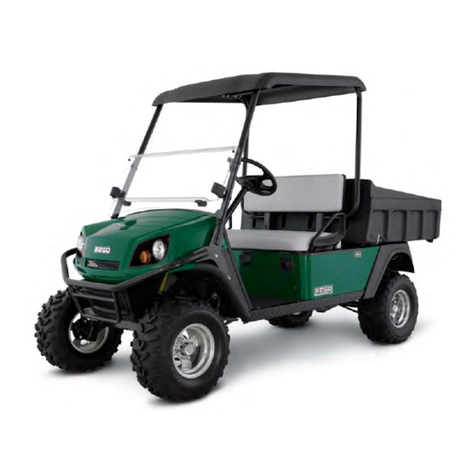
Cushman
Cushman HAULER 800 2012 Technician's repair and service manual
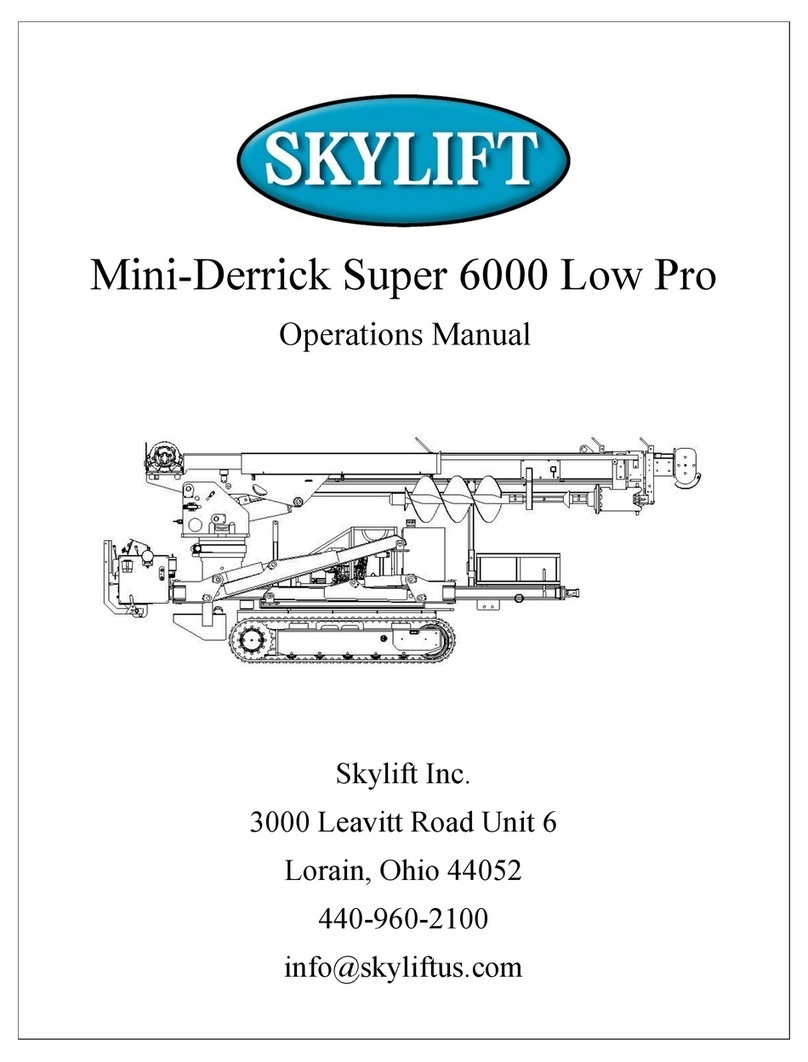
Skylift
Skylift Mini-Derrick Super 6000 Low Pro Operation manual
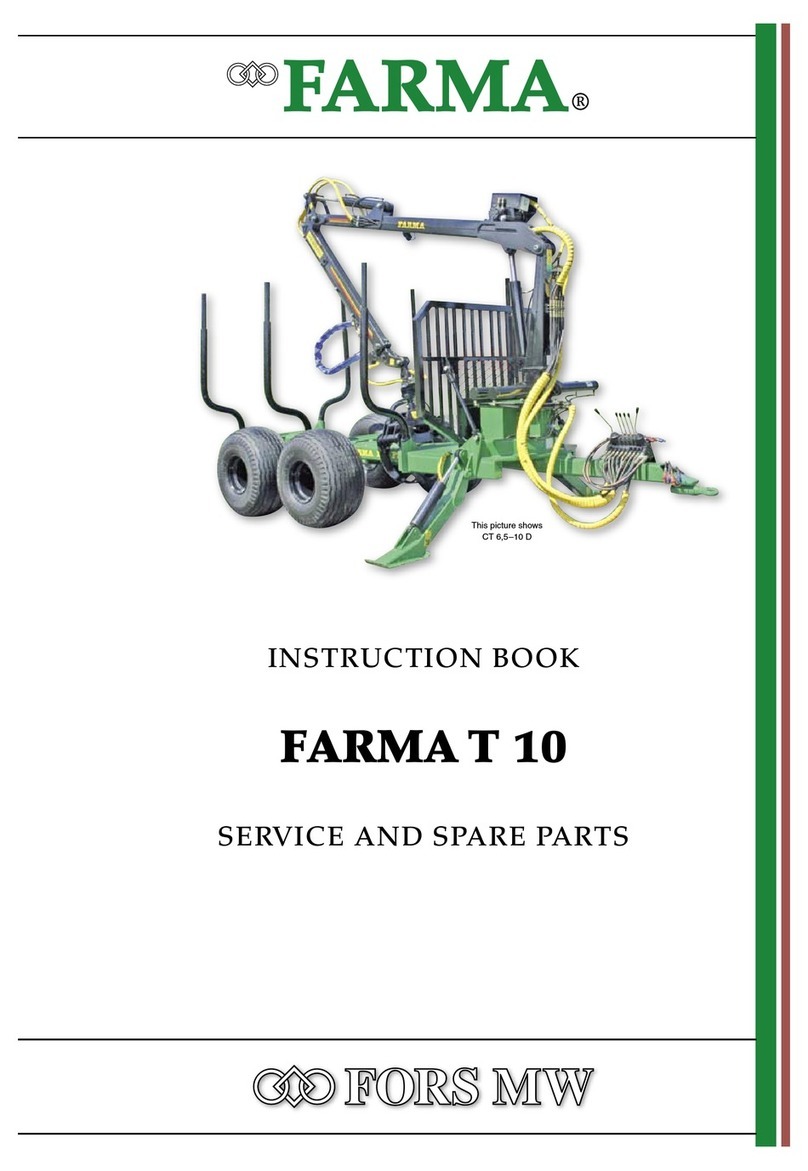
FORS MW
FORS MW FARMA T 10 Instruction book
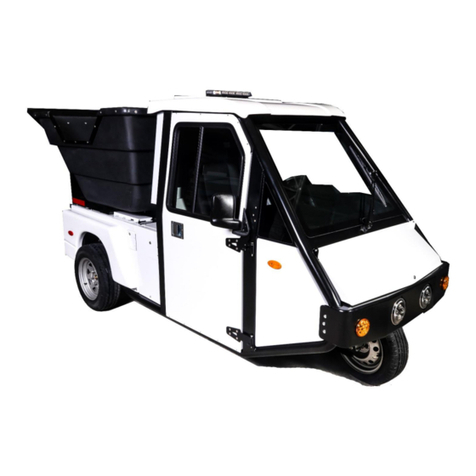
Westward
Westward Go-4 XTR Operator's manual
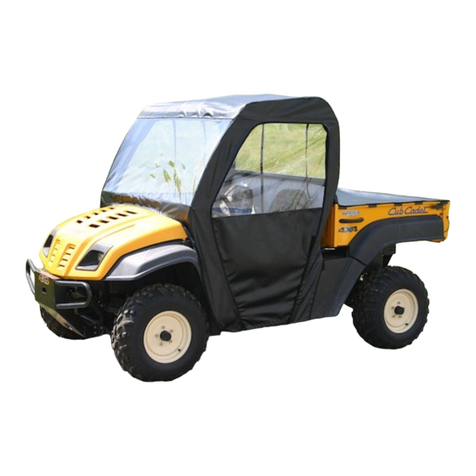
Cub Cadet
Cub Cadet Volunteer 4 x 2 Utility Vehicle brochure

Club Car
Club Car Tourall 1990 owner's manual

